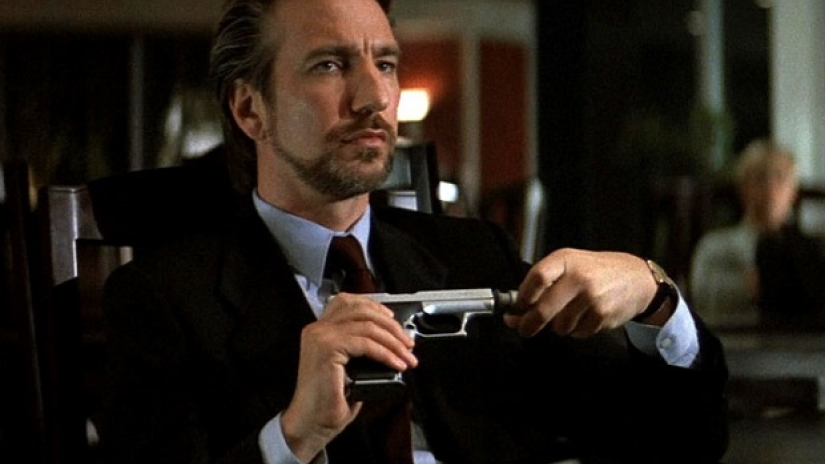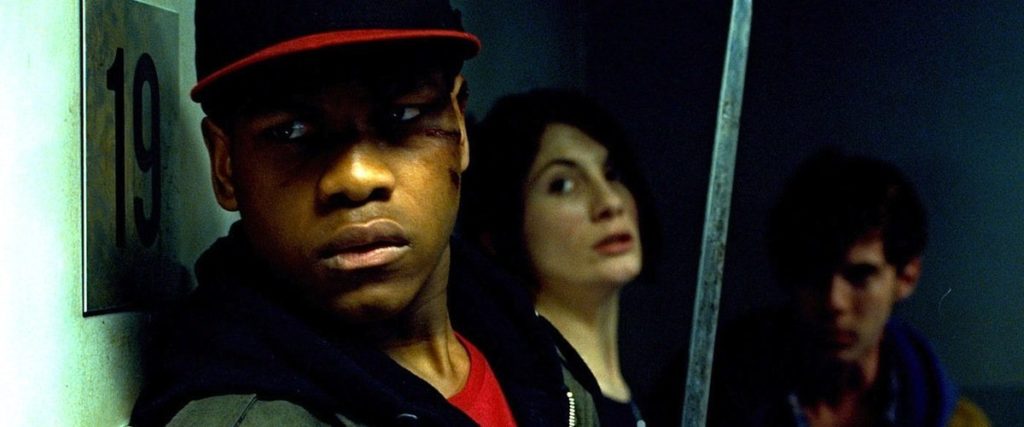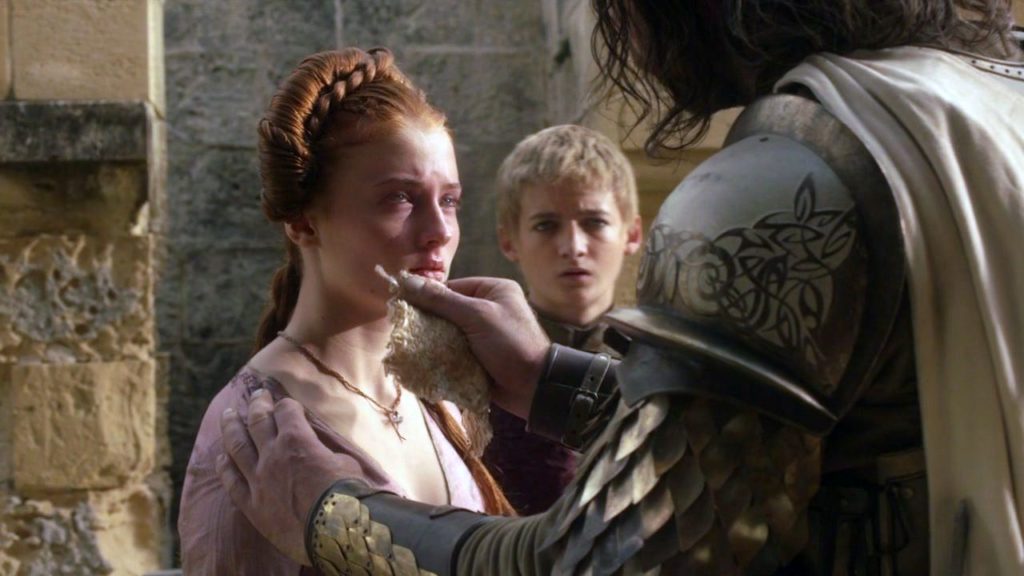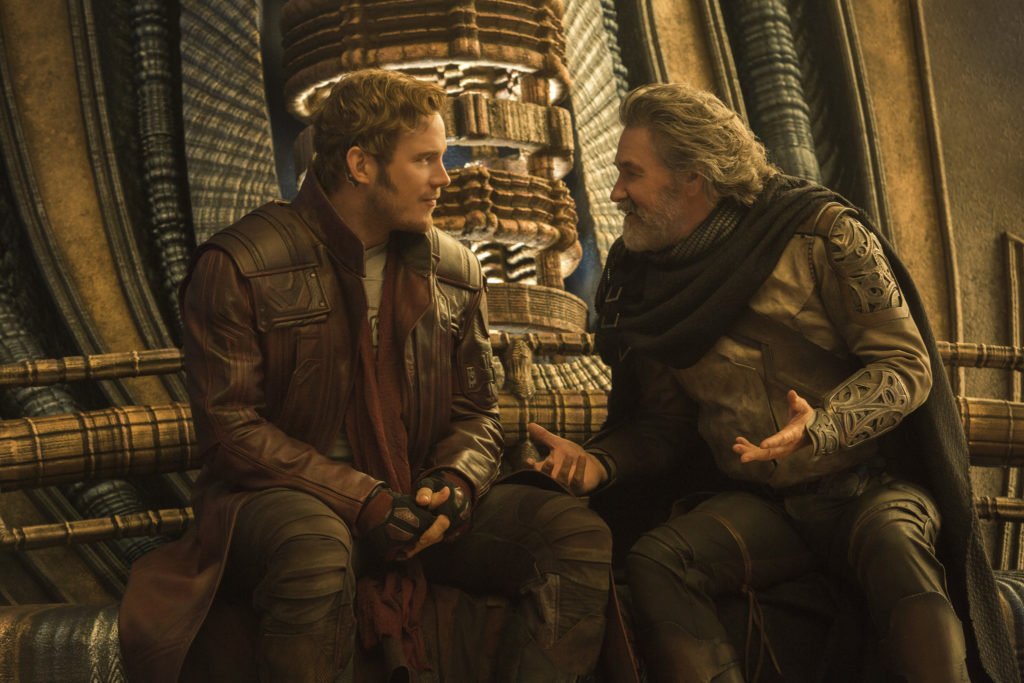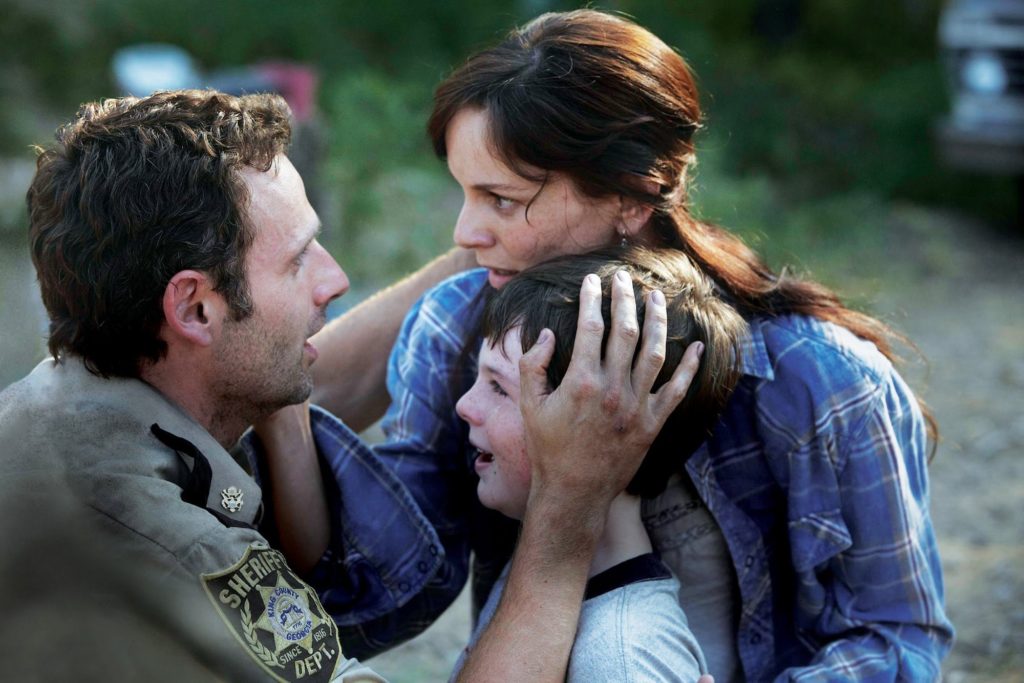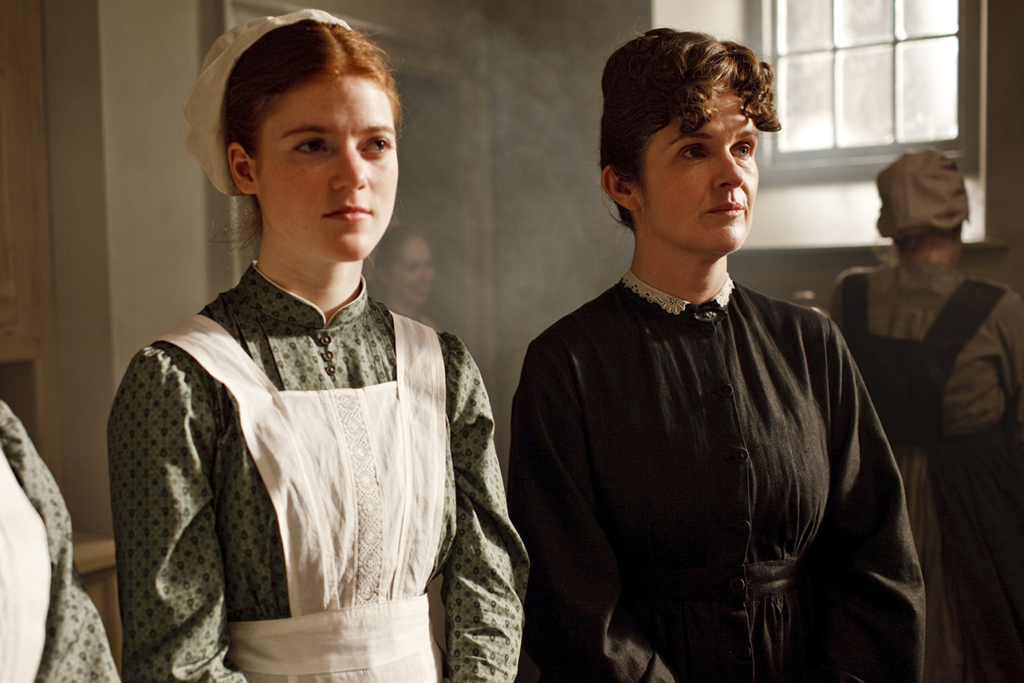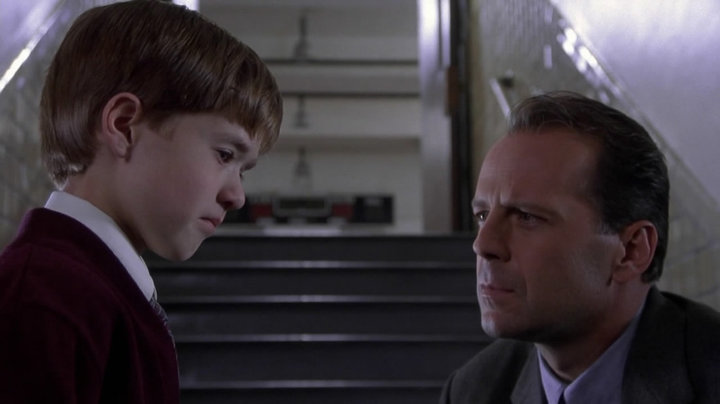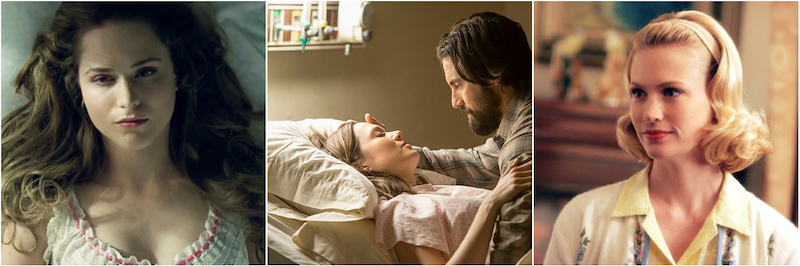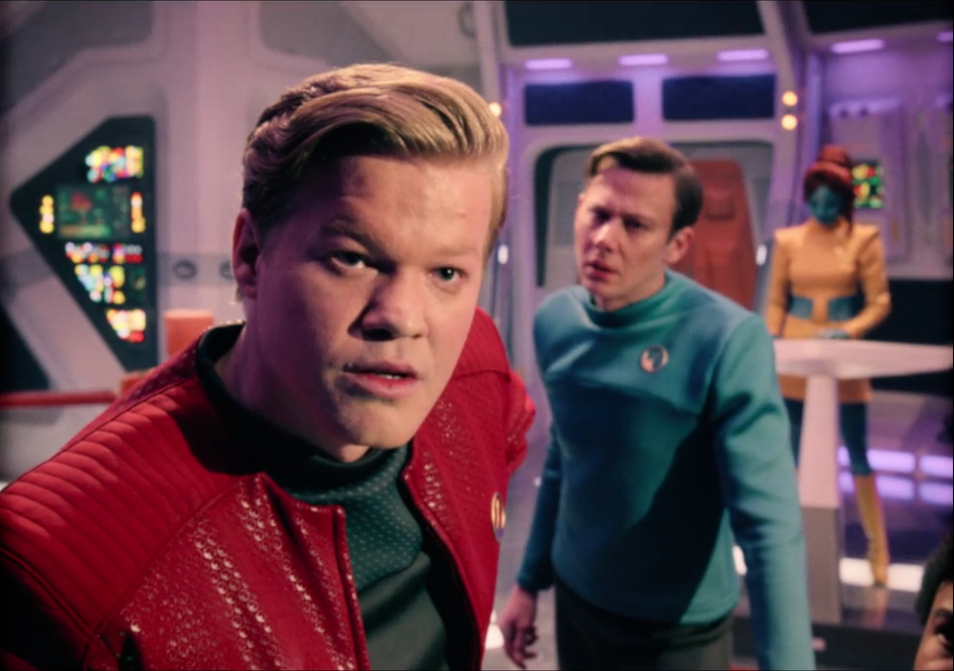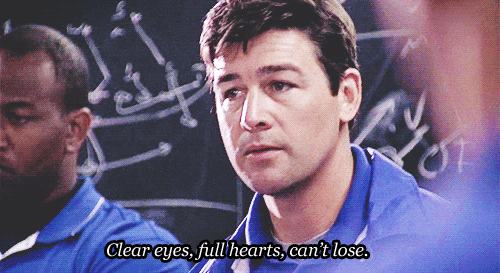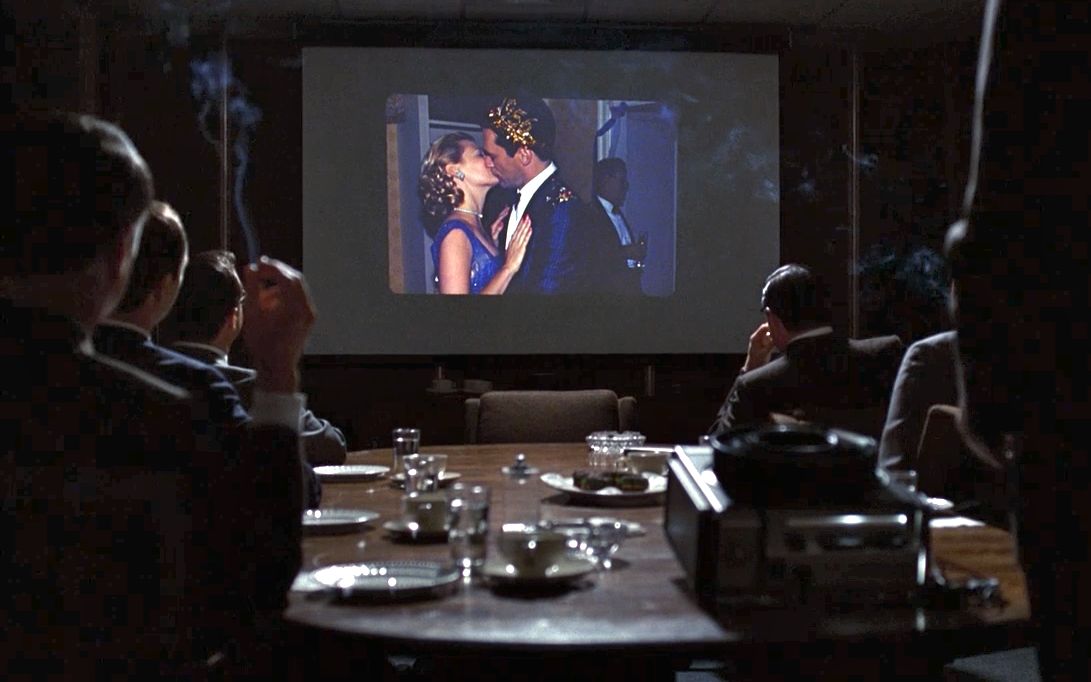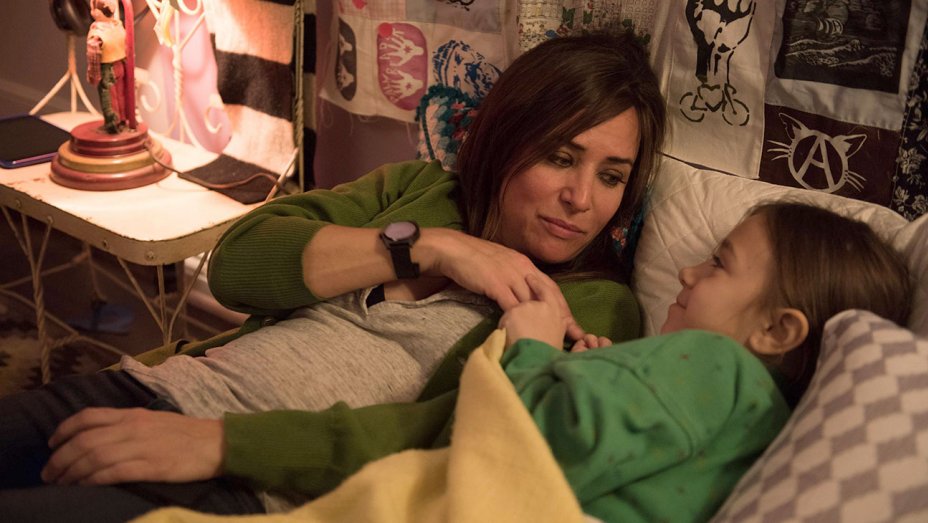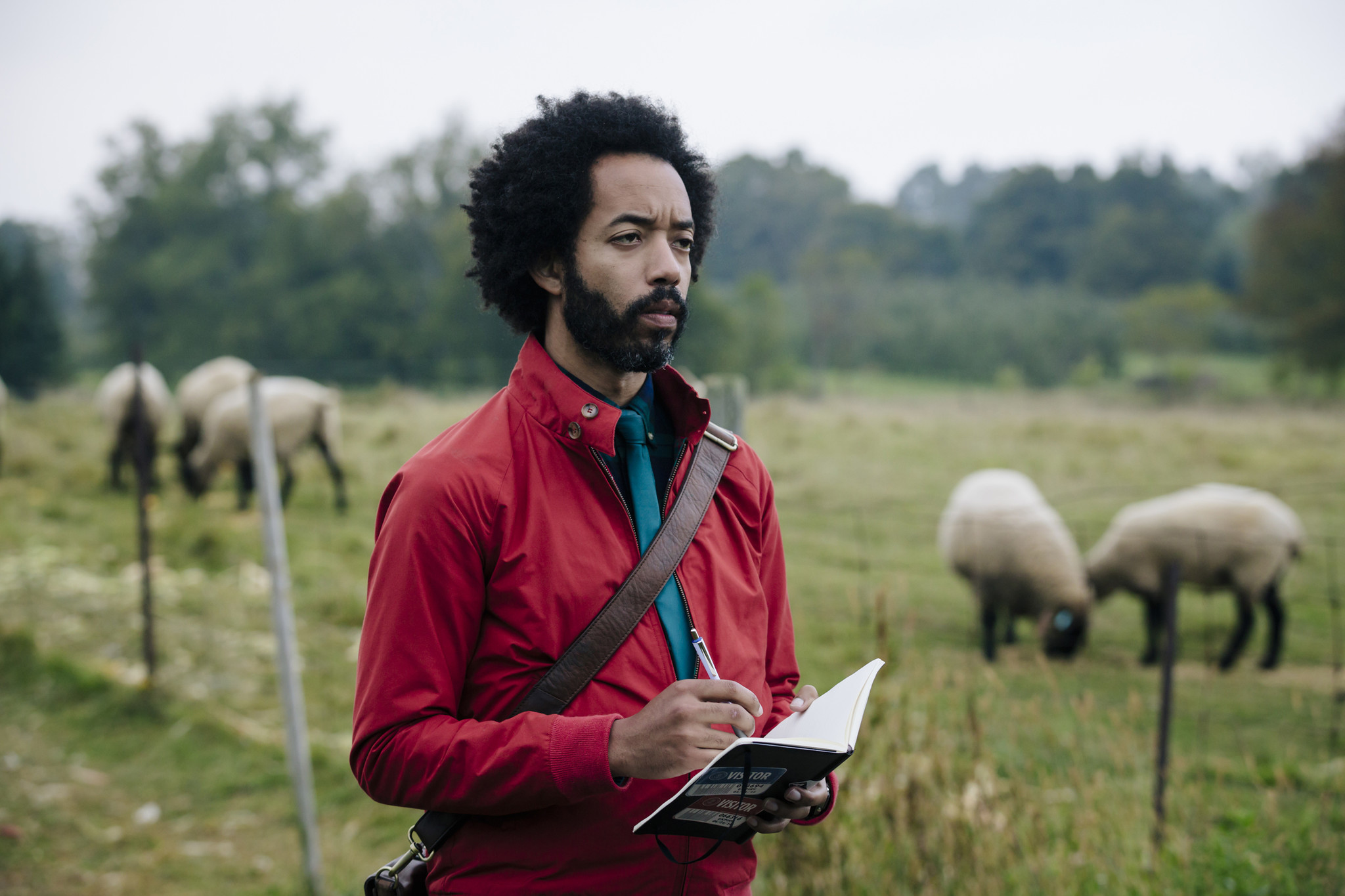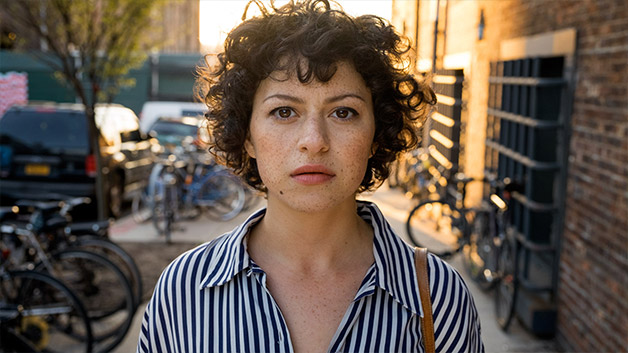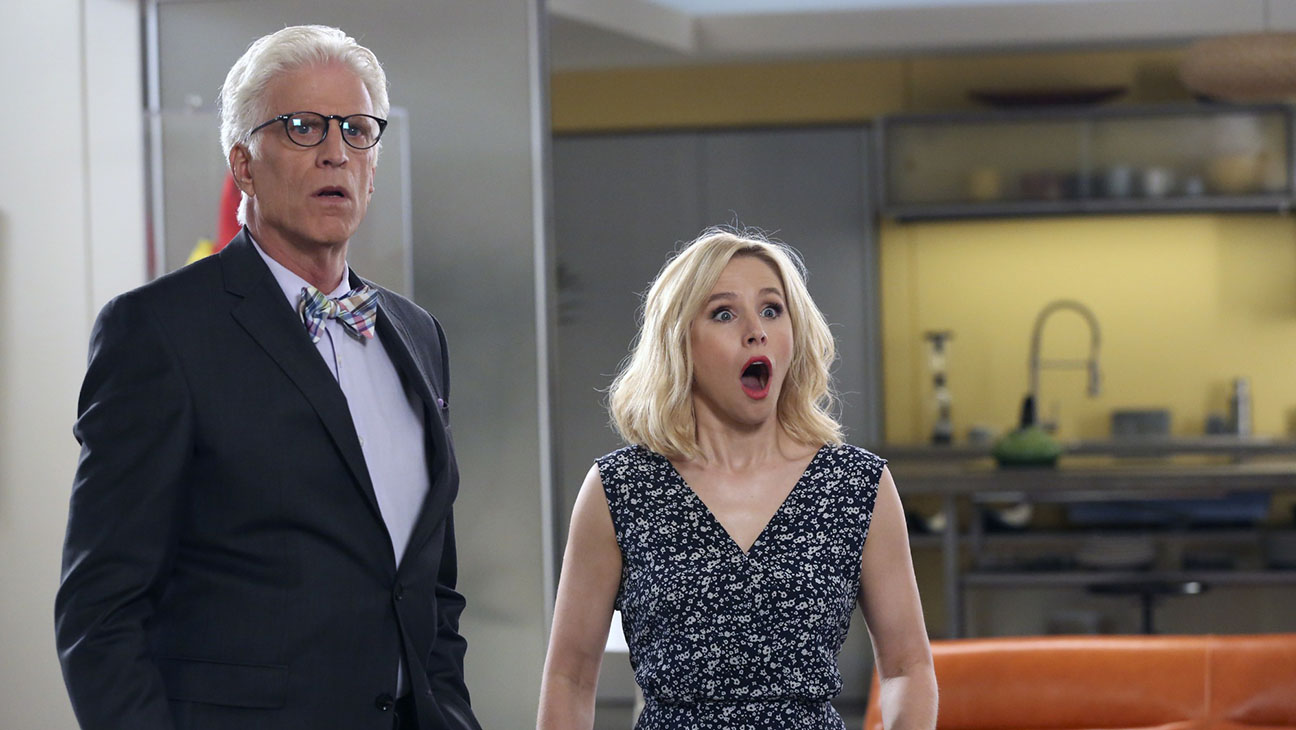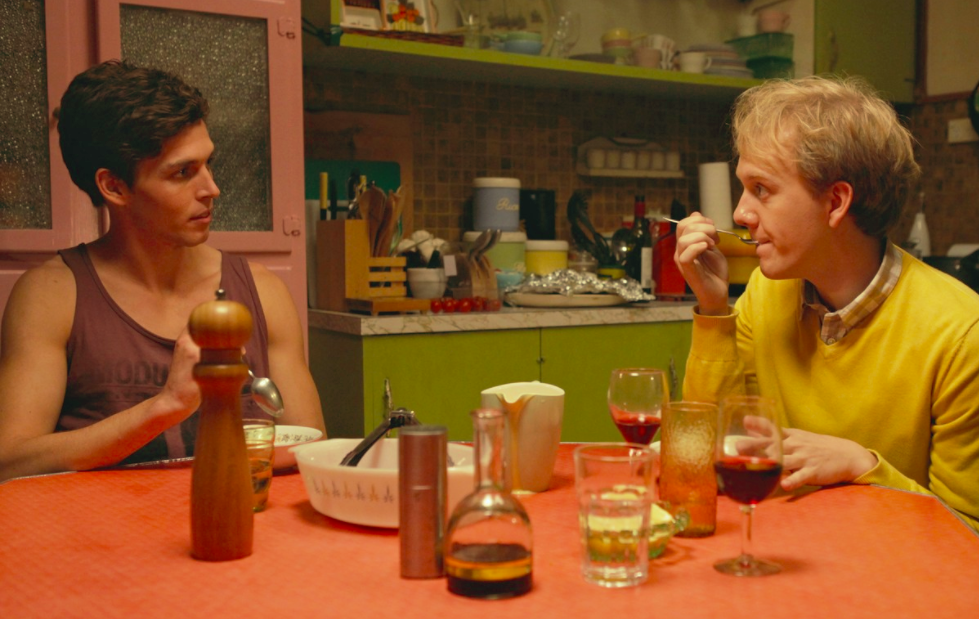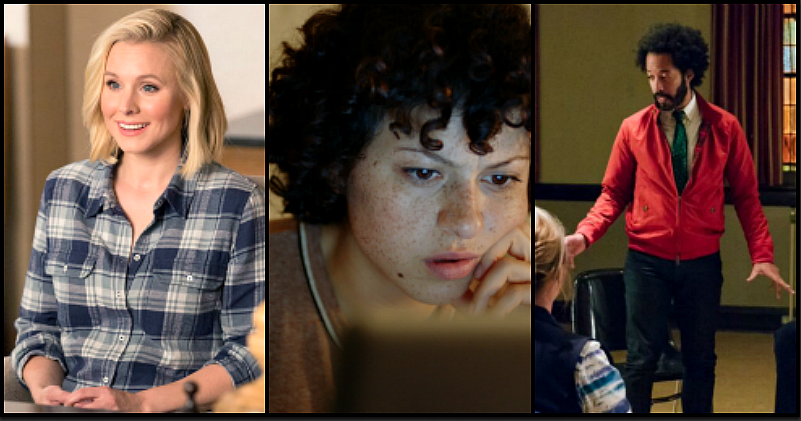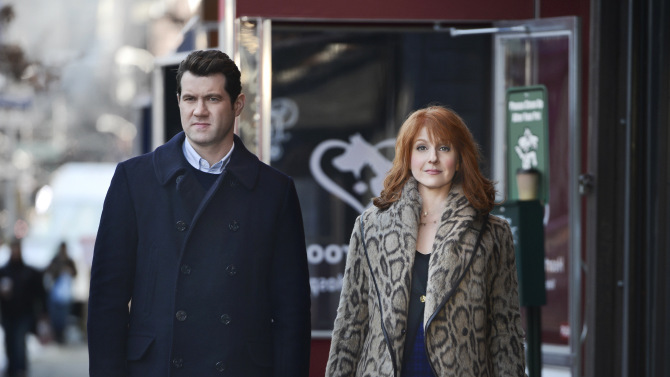Over the past several years, I’ve read a lot of television scripts of both the sold and the unsold variety and I’ve come across one feature that I think is the most common differentiator between the two.
It’s missing in most unsold scripts I read and it’s often missing in even my own writing, but you’d be hard-pressed to find a scene in a critically acclaimed TV show that doesn’t have it.
It’s not about formatting. It’s not about whitespace. It’s not about voiceovers or scene description or how many pages long it is.
It’s about reversals.
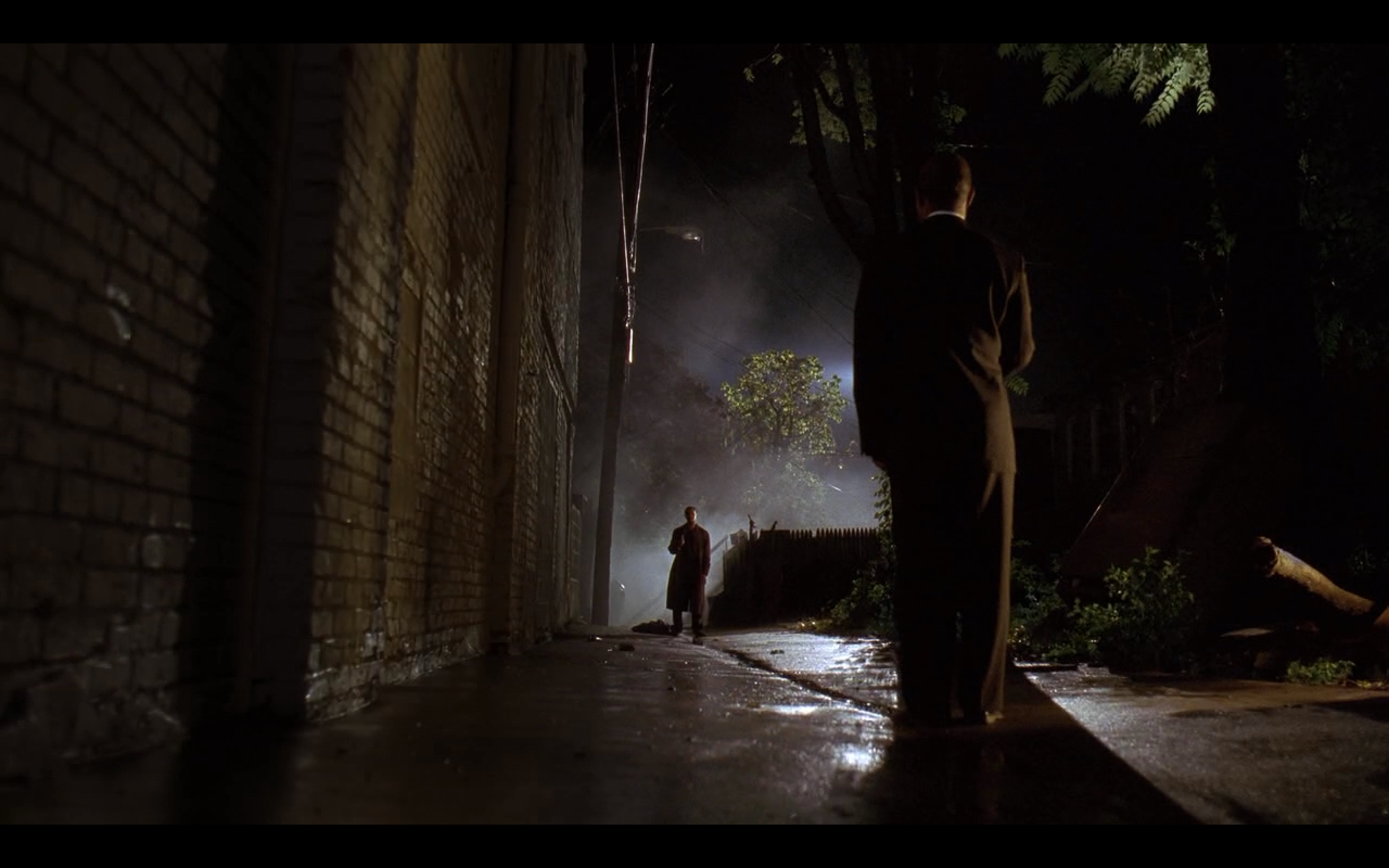
The Wire (2002), “Middle Ground”
When I say “reversal” I’m talking about a power shift that results in a reversal of fortune for a character. The best scenes often have several reversals but pretty much any scene of substance needs at least one.
It’s impossible to completely avoid spoilers while discussing this topic so while I avoid sharing unnecessary information, there are mild spoilers below for:
- Game of Thrones (2011), Season 7, Episode 5, “Eastwatch”
- The Sopranos (1999), Season 4, Episode 12, “Eloise”
- The Wire (2002), Season 3, Episode 11, “Middle Ground”
I’ve included Youtube embeds below, but the full episodes are available from HBO. If you have Amazon Prime and you’ve never subscribed to HBO through Amazon before, you can get a one-week free trial.
Reversals aren’t only for big, meaty, important scenes. The scenes below aren’t climactic scenes in their respective episodes. They didn’t win anyone an Emmy1. In fact, the scene I chose from The Sopranos didn’t even merit a mention in the A.V. Club review of the episode.
These scenes are table-setting for more substantial meals to come, but even so, the writers took the time to craft real drama, moving the story forward by reversing the fortunes of its characters, sometimes multiple times in a single 2-3 minute scene.
I sometimes use terms like “act three” and “midpoint” and “inciting incident” to describe the structure of the scenes below, but it’s very unlikely the writers outlined these scenes with act breaks when writing them.
I note these structural beats because most great scenes have a beginning, middle, and end — a setup, a rising action (complication), and a climax/resolution (payoff). That’s a helpful thing to keep in mind.
The goal is not to pull out a calculator and make the setup exactly 25%, the rising action exactly 50%, and the climax/resolution the last 25%. You might find that a well-paced scene ends up close to that naturally, but the scenes below don’t match up perfectly to those percentages, nor should they.
Instead, the concept of a beginning, middle, and end to a scene is something to consider if a scene you wrote feels weak. Weak scenes often lack a real setup, complication, or payoff. Is there a power shift in the scene? Does a character experience a reversal of fortune, however small and subtle?
Game of Thrones (2011)
Season 7, Episode 5, “Eastwatch”
Written by: Dave Hill
Watch the full episode here for context.
Premise: Davos and Tyrion have secretly come to King’s Landing. Davos is attempting to sneak Gendry (a man he doesn’t think can fight but who he’d like to protect) back to Dragonstone with them. Tyrion is a wanted man in King’s Landing but he’s there for a secret meeting.
Goal: Davos, Gendry, and Tyrion want to escape King’s Landing unnoticed and unharmed. At the start of this scene, they’re very close to achieving this goal.
Intro/Setup: This part is cut out of the Youtube embed above, but the first ten seconds or so of the scene is Davos and Gendry preparing to sail as Davos tells Gendry not to tell anyone back on Dragonstone who his real father is.
First Reversal: The first reversal, which acts as the inciting incident of the scene, is when two guards happen upon Davos and Gendry and wonder why they’re boarding a boat on a hidden beach instead of at the docks.
Davos immediately launches his first tactic, which is to pretend that he and Gendry are traders trying to avoid high tariffs at the dock. He gives the guards a bribe. This seems like it’s going to work.
The guards demand a higher bribe. Davos pretends to be annoyed by this, but it’s actually part of his plan to make the guards feel like they won so they’ll leave them alone.
Second Reversal: It seems like Davos and Gendry are going to be able to escape, but then at almost exactly the 25% mark (the beginning of “act two” of the scene) one of the guards asks: “What’s in the boat?” They’re not going to let Davos and Gendry leave that easily.
Midpoint Reversal: Fortunately, Davos is an experienced smuggler so he has a backup plan for this too. He has fermented crab stowed in the boat under blankets and tells the guards it’s an aphrodisiac. He gives them a sample and encourages them to go to a brothel.
Third Act Reversal: The guards are leaving and it looks like everything’s going to work out, but at about the 75% mark, the beginning of act three, Tyrion returns from his meeting just in time for the guards to see him. They recognize him. Davos tries to offer them more gold but they refuse.
Final Reversal: In a final twist, Gendry kills both guards with the hammer he packed earlier that Davos was skeptical he’d be able to fight with, thus proving his value as a fighter and securing their freedom from King’s Landing.
Total Reversals: There are at least five reversals in this three-minute scene.
- Davos and Gendry think they’re going to easily escape, but then guards happen upon them. Davos offers them a bribe. They demand a higher bribe and he agrees.
- Davos and Gendry once again think they’re safe, but then the guards want to see what’s in the boat.
- It seems like Davos and Gendry are done for, but then Davos shows the guards some decoy fermented crab and convinces them that it’s an aphrodisiac, sending them off to the brothels.
- Davos and Gendry once again think they’re going to escape, but then the guards see Tyrion and recognize him from his description as a wanted man.
- It for sure seems like they’re toast this time, but then Gendry kills both guards with his hammer. They are finally able to escape.
Change of Fortune: This scene begins with the characters thinking they’re going to successfully escape and it ends with them successfully escaping, so from that perspective, there’s no change at all. But the larger change is that Davos and Tyrion now see that Gendry is a worthy fighter.
The Sopranos (1999)
Season 4, Episode 12, “Eloise”
Written by: Terence Winter
Watch the full episode here for context.
Premise: Little Carmine has come back to New Jersey from Miami to meet with his mob boss father and underboss Johnny Sack over a game of golf. At Johnny’s request, Little Carmine has come to convince his father to back down on a dispute he’s having with Tony Soprano over a HUD scam.
Goal: Our point of view character in this scene is Johnny Sack (we open and close on his emotional state), who’s done a lot of political maneuvering to make this conversation happen and whose goal is for Little Carmine to stay on script and convince his father to back off the conflict with Tony.
Intro/Setup: The first 25% of this scene is a friendly chat between Johnny and Little Carmine that drops a little exposition and setup. They seem to be on the same page about this upcoming conversation and Johnny is relieved that it’s all so close to being resolved.
Johnny: “Anything you can do to change your father’s mind.”
Little Carmine: “I’m going to try, John. I came all the way up here for that.”
First Reversal: The first reversal, which kicks off “act two” of the scene, is that Carmine Sr. immediately takes power in the conversation, belittling his son in small ways (“You put your sunblock on?” “I’m taking a mulligan.”).
For the first half of act two (approximately the next 25% of the scene), Little Carmine is staying on script, but Carmine Sr.’s bullying makes Johnny nervous. Johnny likes to be in control, but his tactic here is to hang back and give Little Carmine space to do what he promised to do, but he can’t resist overstepping a bit when he says, “Even from the beginning I thought forty was a tad steep,” which leads to —
Midpoint Reversal: The big reversal comes at the midpoint when Carmine Sr. says of Tony Soprano: “I’d have been proud to call him my own son.” Little Carmine is desperate for his father’s approval so this line is a blow to his ego and Johnny knows it.
In the second half of act two of this scene, Johnny sees what’s happened and quickly changes tactics, taking over the conversation to try to smooth things over himself with Carmine Sr. (“Maybe there’s a compromise here then.”) It seems like this might work. (“There’s always a compromise.”)
Third Act Reversal: But at the 75% mark (the beginning of “act three” of this scene), Little Carmine can’t resist the urge to take a dig at Tony, though he came all the way from Miami to advocate for him. “He’s a bit of a poseur, you ask me.” Now he’s aligning himself with his father, sucking up to him and throwing Tony under the bus.
At this point, Johnny has to change tactics yet again, dropping the charm and stating his feelings baldly. “Whatever they are, Carmine, the Sopranos bring in a lot of cash. I’ve been close with Tony for a lot of years.”
Now Little Carmine turns on Johnny too. “Maybe… Tony feels like you’re friends and not business associates.” Johnny was so close to getting what he wanted, but now he’s lost.
Total Reversals: There are at least three reversals in this two-minute scene.
- Johnny and Little Carmine think this intervention is going to be a success, but Carmine Sr. shows up and makes a power move by belittling his son, setting the meeting off on the wrong foot. But Little Carmine sticks to the script and continues making his case with Johnny playing a supporting role.
- It seems like maybe Little Carmine is going to overcome his father’s bullying, but then Johnny oversteps. In retaliation, Carmine Sr. says he’d have been proud to call Tony Soprano his son, which throws Little Carmine off his game. Johnny Sack jumps in to try to smooth things over.
- It seems like Johnny might get through to Carmine Sr., but Little Carmine switches allegiances and takes his father’s side against Johnny and Tony.
Change of Fortune: Our POV character, Johnny Sack, starts out the scene hopeful that his work has paid off and this problem is about to be peaceably resolved, but by the end of the scene he’s frustrated and pessimistic about his ability to solve this conflict without bloodshed.
His fortune really only changes once in this scene, but his misfortune escalates with each reversal throughout the scene.
The Wire (2002)
Season 3, Episode 11, “Middle Ground”
Written by: George Pelecanos
Watch the full episode here for context.
Premise: Omar Little, a notorious stick-up man, is walking home with his laundry when he’s stopped at gunpoint by Brother Mouzone, a hitman from New York. They have a violent history but also a grudging respect for each other, and they are each pretty much the only person the other has reason to fear.
Goal: Omar’s external goal is to escape this encounter alive, killing Brother Mouzone if he has to, but his internal goal is to find out what the other man wants. He could probably kill him if he wanted to, just as Brother Mouzone could probably kill Omar, but they’re as intrigued by each other as they are wary.
Brother Mouzone’s goal in this scene is to make an important proposition to Omar without being killed before he can do it.
Intro/Setup: Omar is walking home with his laundry, whistling his trademark tune.
First Reversal: The inciting incident comes about 20% into the scene when Brother Mouzone stops him at gunpoint. Omar’s first tactic is to threaten Mouzone (“I need to remind you who I am?” and “I ain’t tossing nothing.”) even though he’s at the clear disadvantage. He slowly reaches for his gun and it seems like he’s going to get to it in time when —
Midpoint Reversal: At the midpoint of this scene, Omar asks how he found him and Brother Mouzone tells Omar that his boyfriend gave him up. “He didn’t give you up easily.” Omar is afraid now that Brother Mouzone killed his boyfriend. Now he’s angry and he has his gun in his hand though it’s not pointed at the other man. (“Even if I miss I can’t miss.”) Brother Mouzone seems confident Omar won’t shoot when —
Third Act Reversal: At the 80% mark, Omar levels the gun fully at Brother Mouzone. Now any advantage of surprise Brother Mouzone originally had is gone. They are on equal footing. Either could kill the other at any moment. Instead —
Final Reversal: Brother Mouzone lowers his weapon. “I want to ask you something, brother.” Omar lowers his as well. “Omar listening.”
Total Reversals: There are at least four reversals in this 2.5-minute scene.
- Omar is having a pleasant night before he’s unexpectedly stopped at gunpoint by Brother Mouzone.
- It seems like Omar is going to get to his gun in time to shoot Brother Mouzone when the hitman tells him that his boyfriend gave him up and that he still has him captured.
- Angry, Omar still slowly moves for his gun as the two men talk. Brother Mouzone seems confident Omar won’t shoot, but then Omar does turn it on him.
- They’re trapped in an old Western style stand-off, when Brother Mouzone decides to lower his own gun even though Omar could easily kill him. He surprises Omar one more time: “I want to ask you something.” Omar lowers his gun to listen.
Change of Fortune: At the beginning of this scene, Omar and Brother Mouzone are on opposing sides but they share a wary respect for each other and they have a shared enemy. During this scene, they nearly kill each other, but by the end of the scene they are entering into a partnership.
***
Note: I chose these three scenes pretty much at random based on what was available on YouTube, trusting that any scene from a critically acclaimed series would be a good example for this post. I chose shows that are widely watched among people who care about TV writing so that it would be more likely that readers had seen the episode.
What’s funny is that without meaning to, I somehow chose three scenes that are not only written by men, but all the actors in the scenes are men! I’ll make an effort in future posts to choose more balanced examples.
***
You can now like this page on Facebook! On the Facebook page, click the “Following” dropdown and select “See First” and “Notifications On” to get notified of new posts.

